After the killing of foreign sailors on Taiwanese soil and the resultant Mudan Incident of 1874, which threatened the Qing’s claims on Taiwan, Chinese authorities decided to beef up defenses in the south by constructing a wall around what is today’s Hengchun Township (恆春) in Pingtung County. Today, it has the distinction of being the only city wall left in Taiwan with all of its original gates still intact.
Not only are the original gates still intact, but most of the original wall is still standing, and open to the public. A walk along — and often on top of — the wall is a great way to get familiar with the town and see a bit of history. At only 2.5 km around, an hour or two on foot is enough to finish the entire loop.
Standing in front of the Hengchun bus station, the original South Gate is visible at the end of Nanmen Road (南門路, literally “South Gate Road”) nearly straight ahead. This is the most ornate of the old city gates and a fitting place to begin the walk. For over a century, this has been the gateway to Kenting (墾丁). At one point, a rail line even ran through the gate down to Nanwan (南灣). Nowadays, vehicle traffic heading to Kenting still leaves the city on this same road, but now passes around the gate in a roundabout. After taking a few moments to admire the reconstructed tower atop the gate, start your tour of the wall itself by turning east along Lane 14, Nanmen Road.
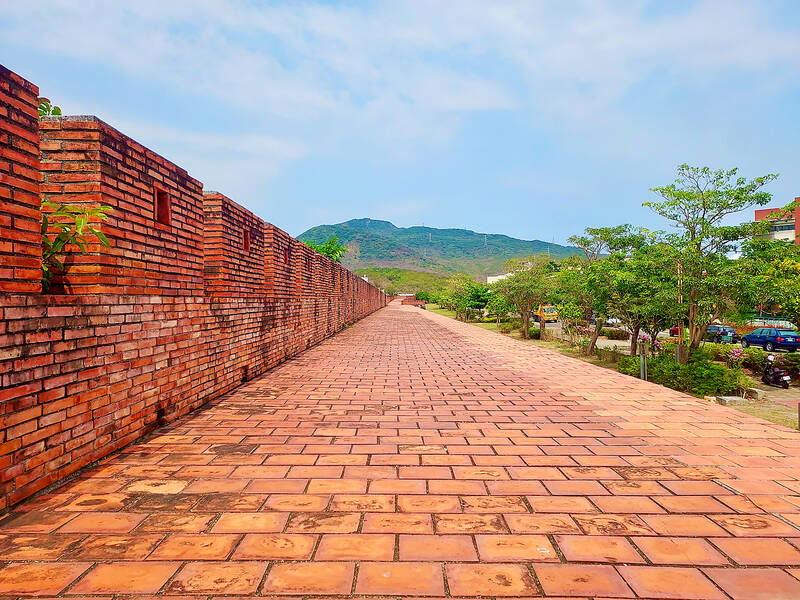
Photo: Tyler Cottenie
AROUND THE TOWN
Remnants of the wall are visible on the until the junior high school is reached. Here, a section of the wall was demolished to make room for the schoolyard. More recently, however, a steel-and-wood elevated walkway was built along the original wall’s path, allowing pedestrian traffic to continue following the route of the old city wall without blocking the schoolyard below.
On the far side of the schoolyard, the walkway reconnects to the top of the original wall, which is then intact all the way to the East Gate. The inscription above this gate, as with the South Gate, states that the gate was built in the first year of the Guangxu Emperor, i.e., 1875. At that time, the Alangyi Trail (阿朗壹古道), which connected Hengchun with Taitung County, began here. Nowadays, County Road 200 leaves from beside the gate, leading to Jialeshuei (佳樂水) on the eastern side of the National Park, or to Syuhai Village (旭海), where a section of the old Alangyi Trail is still preserved.
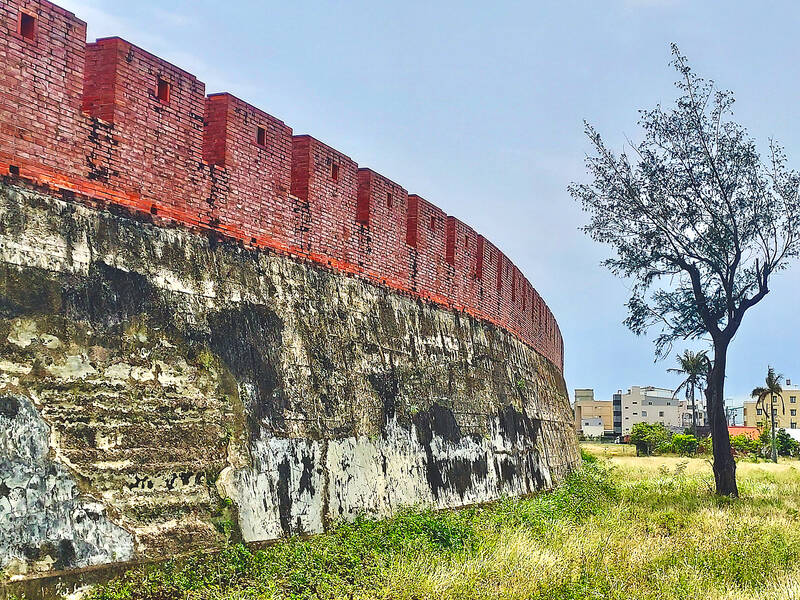
Photo: Tyler Cottenie
‘GHOST GRAPPLING’
After climbing back up onto the wall on the other side of the road and continuing counterclockwise, you will pass by a high platform with 36 poles underneath it. This is where the annual “ghost grappling” (搶孤) festival takes place, during which teams form human towers and try to climb up heavily greased poles to a platform above. This year’s competition is set to take place this weekend, with the festivities spanning from today to Sunday, and the main event taking place Sunday evening.
Next up is the North Gate, which is still connected to the wall and allows both vehicle traffic through it and pedestrian traffic overtop of it. The land just outside of the wall around here is still undeveloped; the landscape of wild grasses and coconut trees probably hasn’t changed much since Qing Dynasty times.
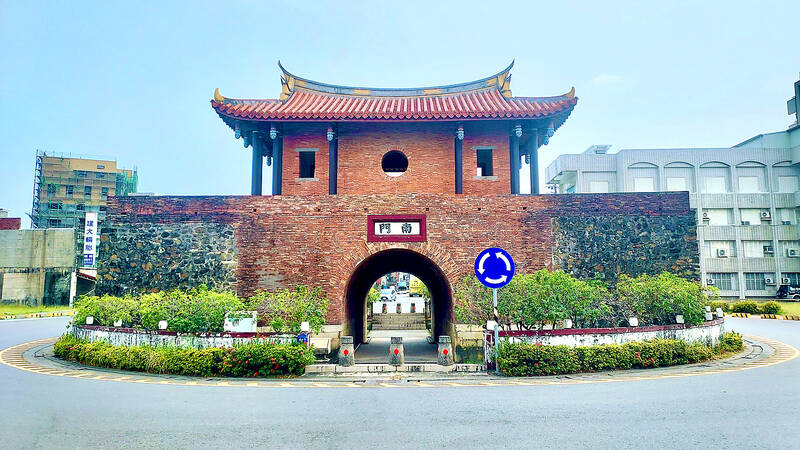
Photo: Tyler Cottenie
Back to County Road 200, where a section of the wall was again removed for the road, you will have been on the wall for an entire kilometer. The section from the East Gate to here is the longest continuous stretch of original wall still standing. After crossing the road, you may continue on top of the wall again or follow the modern paths and alleys running beside the wall for the rest of its course.
THE BUSTLING TOWN CENTER
Just 100 meters ahead is the West Gate. Be careful walking around here as scooters run through the passage frequently, sometimes at high speeds. Larger vehicles need to be careful, too: this is the gate where a campaign truck for Ko Wen-je (柯文哲) got stuck last year. A temple and plaza sit just inside the gate, making this a popular spot for locals to go for a stroll or hang out. For people watching along the wall, this is your best bet.
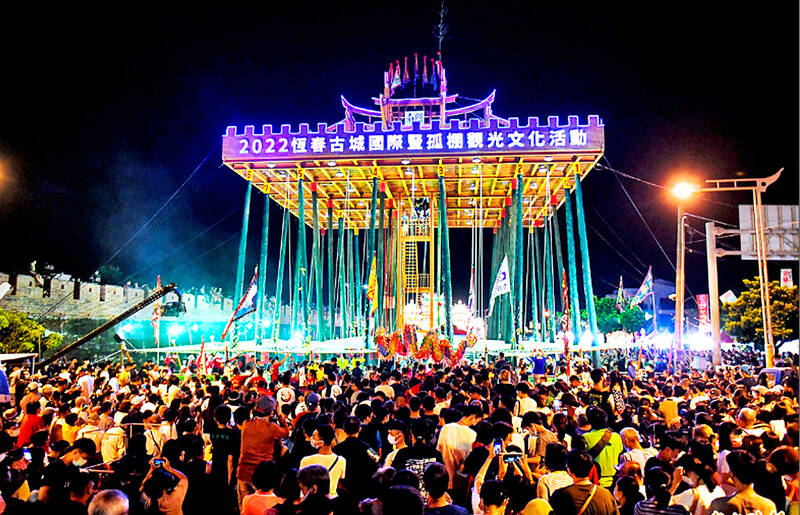
Photo: Tsai Tsung-hsien, Taipei Times
The remainder of the wall passes near Henchun Old Street and the bustling business area around it, including the Hengchun Night Market, which lies just outside the wall. Walking along the wall at night is not only quite a bit cooler, but is perhaps the most photogenic time as the wall is beautifully illuminated in the parks and plazas. If you start your loop of the old wall in the late afternoon, you will arrive in the West Gate area just as the sky is getting dark — and just in time to turn in toward the shops or the night market for a bite to eat. If you want to complete the entire loop first, the wall ends rather anticlimactically across from the Presbyterian Church, with the last 150 meters back to the South Gate having been demolished for roadways.
Exploring the wall is a great way to spend a couple of hours in Hengchun, at any time of day or at any time of the year. With the ghost grappling festival taking place this weekend, however, there’s never been a better time to visit. Hengchun is sure to be livelier than usual, with street performances and additional food vendors around. Climbing up onto the wall is a great way to take in the party atmosphere from above, or to get away from the crowds for a while if they become too overwhelming. Whenever you choose to visit Hengchun next, be sure to take a moment to appreciate one of Taiwan’s best preserved historical monuments, right in the heart of town.
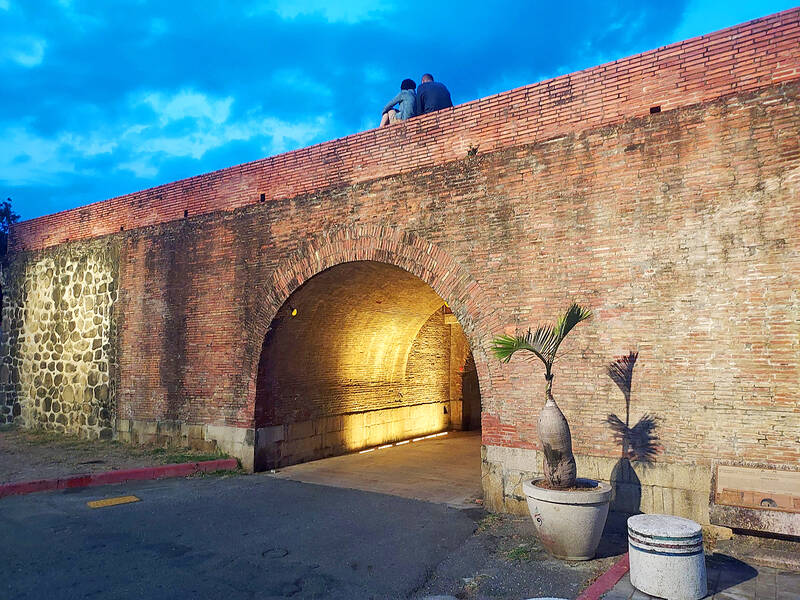
Photo: Tyler Cottenie
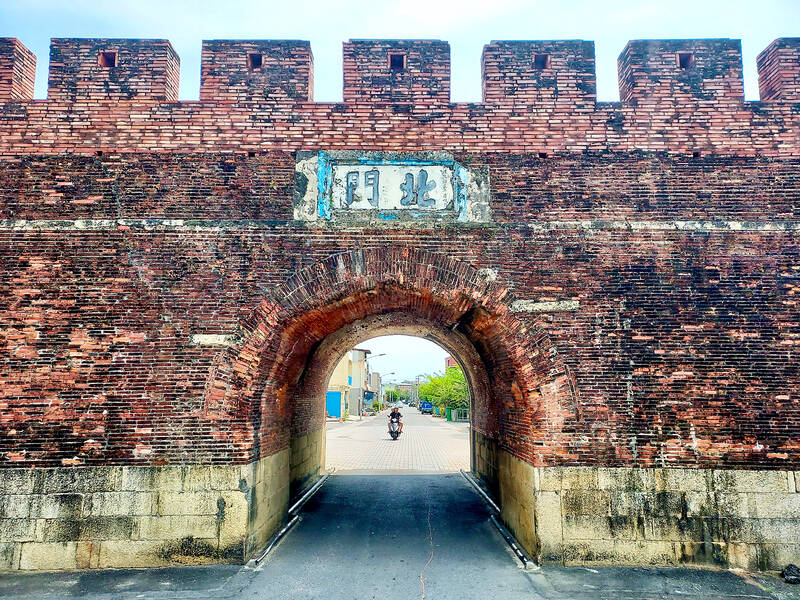
Photo: Tyler Cottenie
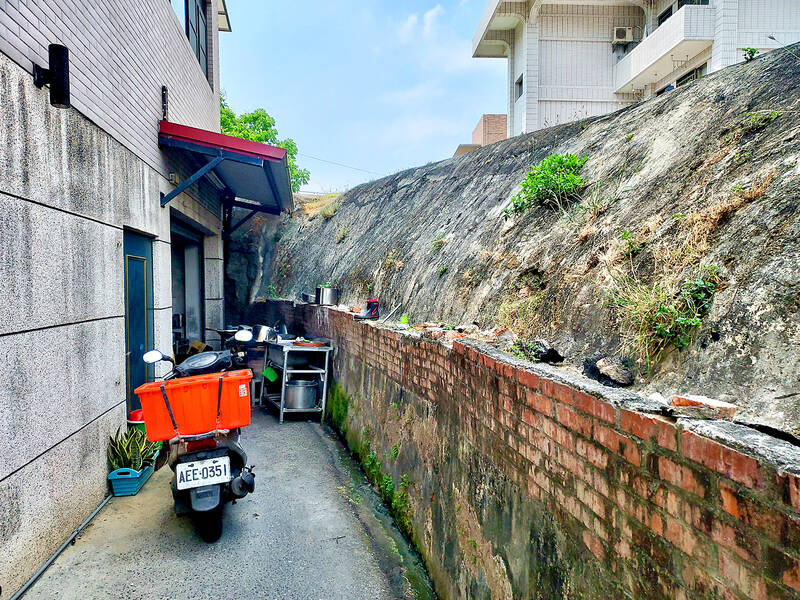
Photo: Tyler Cottenie
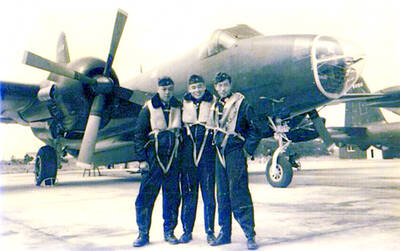
Most heroes are remembered for the battles they fought. Taiwan’s Black Bat Squadron is remembered for flying into Chinese airspace 838 times between 1953 and 1967, and for the 148 men whose sacrifice bought the intelligence that kept Taiwan secure. Two-thirds of the squadron died carrying out missions most people wouldn’t learn about for another 40 years. The squadron lost 15 aircraft and 148 crew members over those 14 years, making it the deadliest unit in Taiwan’s military history by casualty rate. They flew at night, often at low altitudes, straight into some of the most heavily defended airspace in Asia.
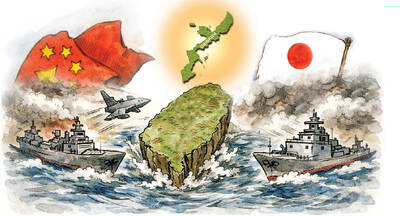
Beijing’s ironic, abusive tantrums aimed at Japan since Japanese Prime Minister Sanae Takaichi publicly stated that a Taiwan contingency would be an existential crisis for Japan, have revealed for all the world to see that the People’s Republic of China (PRC) lusts after Okinawa. We all owe Takaichi a debt of thanks for getting the PRC to make that public. The PRC and its netizens, taking their cue from the Chinese Communist Party (CCP), are presenting Okinawa by mirroring the claims about Taiwan. Official PRC propaganda organs began to wax lyrical about Okinawa’s “unsettled status” beginning last month. A Global

Taiwan’s democracy is at risk. Be very alarmed. This is not a drill. The current constitutional crisis progressed slowly, then suddenly. Political tensions, partisan hostility and emotions are all running high right when cool heads and calm negotiation are most needed. Oxford defines brinkmanship as: “The art or practice of pursuing a dangerous policy to the limits of safety before stopping, especially in politics.” It says the term comes from a quote from a 1956 Cold War interview with then-American Secretary of State John Foster Dulles, when he said: ‘The ability to get to the verge without getting into the war is

Like much in the world today, theater has experienced major disruptions over the six years since COVID-19. The pandemic, the war in Ukraine and social media have created a new normal of geopolitical and information uncertainty, and the performing arts are not immune to these effects. “Ten years ago people wanted to come to the theater to engage with important issues, but now the Internet allows them to engage with those issues powerfully and immediately,” said Faith Tan, programming director of the Esplanade in Singapore, speaking last week in Japan. “One reaction to unpredictability has been a renewed emphasis on